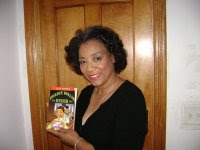Several years ago, I wrote a series of five articles. Each of those articles contained what I professed to be the solutions to the majority of "ills" that have befallen the black community. To refresh your memories, my articles were on the five E's: Economics, Education, Employment and Ex-offenders. The fifth "E" was Excuses (none allowed).
So when I attended the Black Wall Street Summit (BWSS), held on Feb. 27, at 3333 W. Arthington, it was a pleasure. During the course of the day, over 150 people came by to pledge their commitment to the agenda. The primary focus of the BWSS is economics, and if you're not familiar with the origins of the Black Wall Street concept, let me give you a brief history lesson.
In 1921, the Greenwood community in Tulsa, Okla., was a thriving center for business. As with most black communities during that time, the main business strip of Greenwood Avenue was racially segregated. Segregation, however, was not an obstacle but an impetus for the people of Greenwood to build an economic base that rivaled what was occurring in Tulsa proper.
Most every business that the community of Greenwood needed was supplied by the people living there. A dollar circulated in Greenwood from 36 to 1,000 times before that dollar left the community (compare that with Austin today where a dollar leaves faster than it comes in and so few of our businesses are owned by people who live here). The community had millionaires and bank deposits and assets totaling millions of dollars. Booker T. Washington, upon learning of the industriousness of the community, dubbed it "Black Wall Street."
Then an incident occurred on the evening of May 30, 1921 between a black shoe shine "boy," Dick Rowland, and a white elevator operator, Sarah Page. Although rumors had long circulated in the black community that these two were involved in a relationship, the racist Tulsa Tribune (fair to call them that, as they used the word, "Nigger," in writing about the black community) reported that a rape had occurred. The newspaper's incendiary editorial was used to inflame already tense race relations.
What happened afterwards was one of the worst race riots ever. The white community descended on the Greenwood black community, looting, killing and burning homes and businesses to the ground. The riot lasted from May 31 through June 1. It was the first documented episode of an American community being bombed. So many black people were killed and their bodies unceremoniously destroyed that the actual death toll is not known, but estimates range as high as 3,000.
The BWSS I attended is committed to re-establishing within the black community the same sort of business district that once thrived in Greenwood. Our communities can only survive if the residents are committed to supporting the quality businesses in it. And if you are one who readily dismisses local businesses, how do you ever expect to see North, Chicago avenues and Madison Street become the business Mecca we need?
This past Saturday, I helped out a friend at a comedy night, held at the recently at the remodeled Potpourri Banquet Hall located in the Laramie State Bank building at the corner of Chicago and Laramie. The crowd's age ranged from mid-20s to early 40s. The primarily black audience was a testament to the concept that black people can support a black business operating in a black-owned facility with food supplied by a black-owned restaurant with a black wait staff.
It was, in essence, the basic premise of the BWSS mission. The dollars earned were first spent in our community, and the quality of the services, entertainments and all else rivaled anything Rush Street could offer, except that it was located right here in the heart of the Austin community.
Over the next couple of weeks, I am going to revisit my contention that the 5 E's are the only viable solution to the ills that plague us. Whether you agree or disagree, voice your opinions - because when it comes to our community, there should be no silent voices.
You Finished The Book - Now What Did You Think
13 years ago

No comments:
Post a Comment